Lace: The story so far . . .
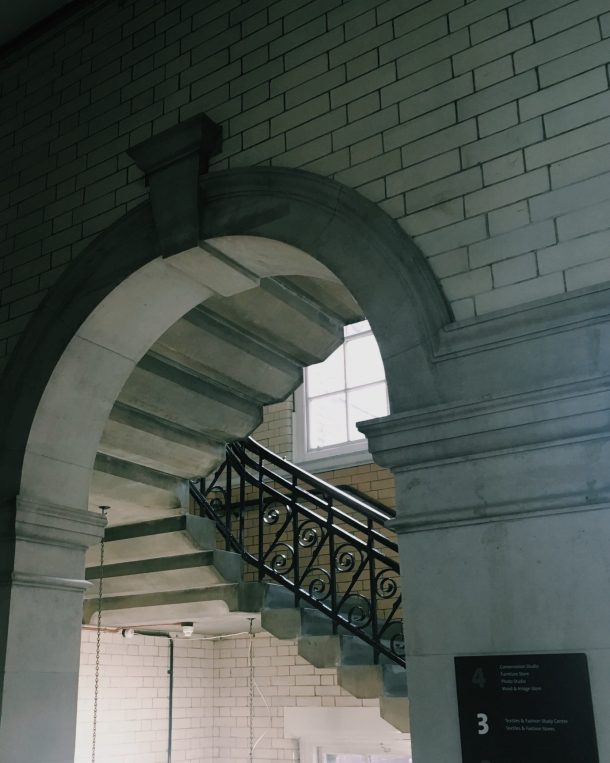
It’s been over 6 months since my last decant blog and a lot of things have changed at Blythe House. Projects have started to increase, teams are growing and general decant plans are moving forward.
One project that I’d like to share with you is the Lace Rehousing Project. This requires a Museum Technician to audit, photograph, condition check, rehouse and barcode over 4000 pieces of lace kept in the stores at Blythe House.
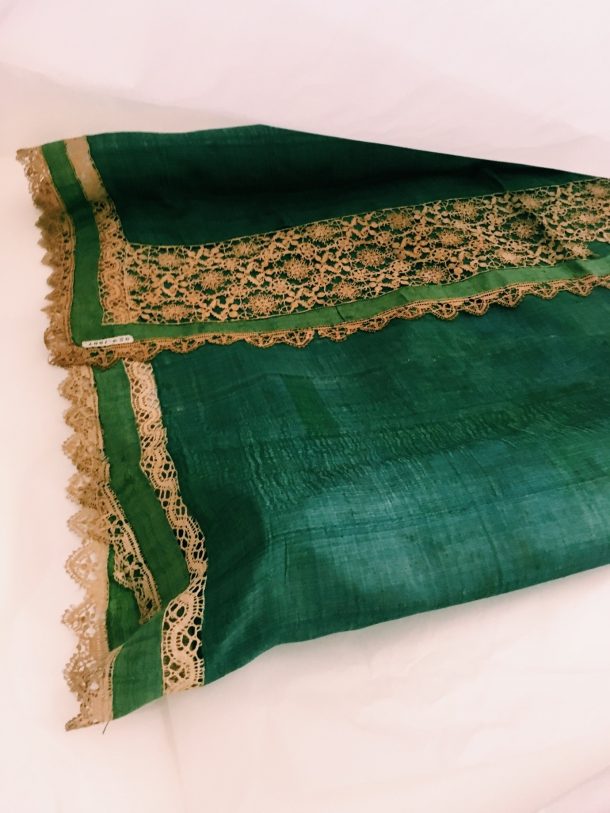
These examples of lace come from many parts of the world and dates can vary greatly. As you can imagine, these delicate objects require a great deal of attention and handling them with care our main priority, communicating any concerns with relevant Curators and Conservation specialists across the Museum.
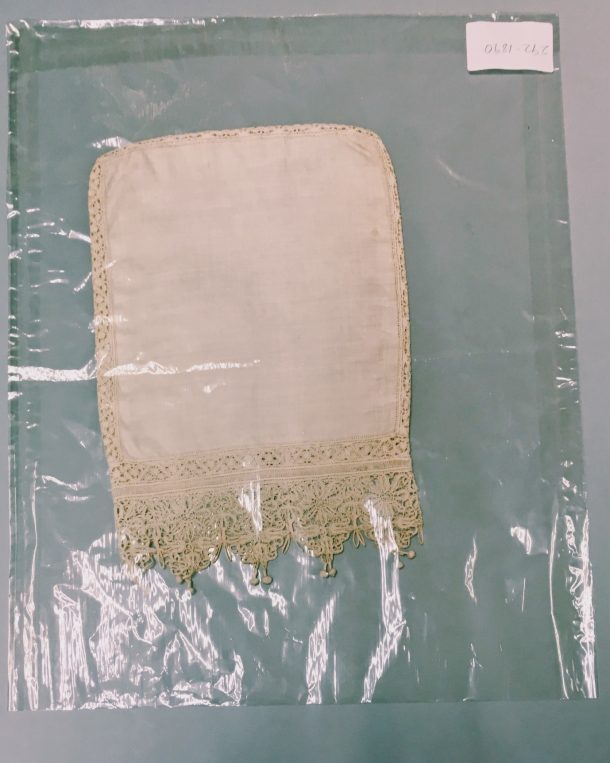
The Technicians prepare the object on set, assess condition code, check object number for audit, take dimensions and photograph.
There are two packing methods we use to rehouse the lace . . .
Packing method 1 requires the Technician to use the measurements taken from the audit to cut Melinex sheets to size allowing enough space to contain the lace and attach the barcode. This then enables the Technician to spot weld the film keeping a 10mm gap around the object. The barcode is then stuck onto the Melinex film and the corners rounded off to avoid any sharp edges.
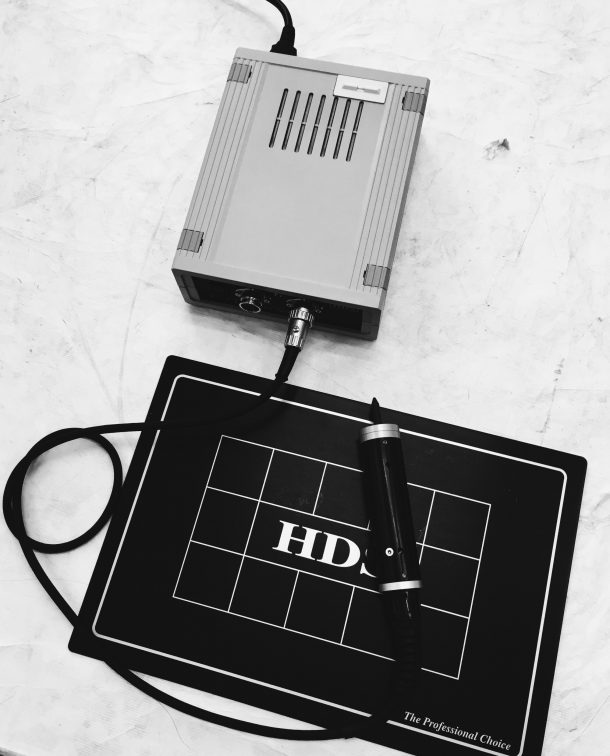
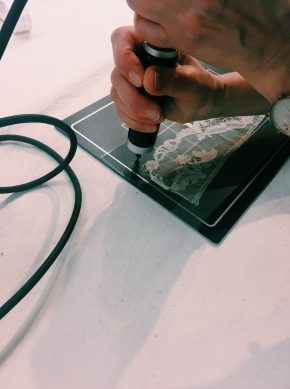
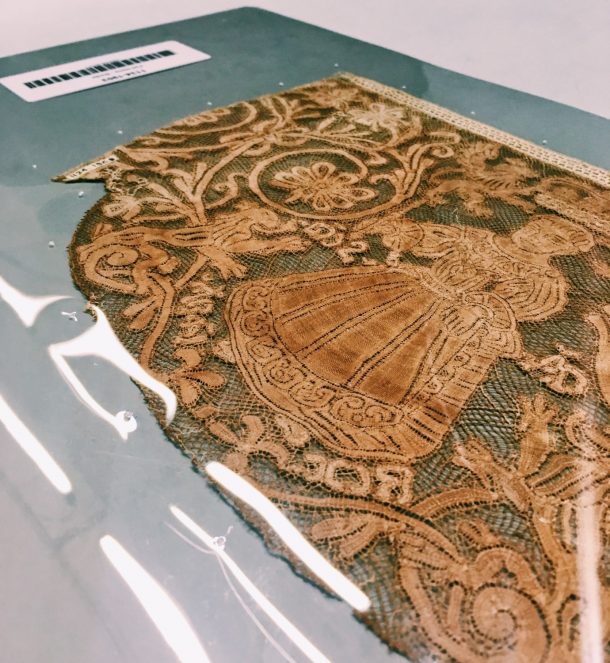
Packing method 2 requires the Technician to cut 2 pieces of Melinex at least 300mm long and 100mm wider than the object, then cut one piece of cotton tubing twice the width of the polyester film, roll one piece of Melinex and encase in the tubing. The lace is then rolled onto the tube toward the object number that is attached to the object and the barcode is then applied to the other piece of Melinex along the short edge. It is then secured with a piece of cotton tape to keep the object in place. This is the most suitable packing method for lace that is over 700mm long.
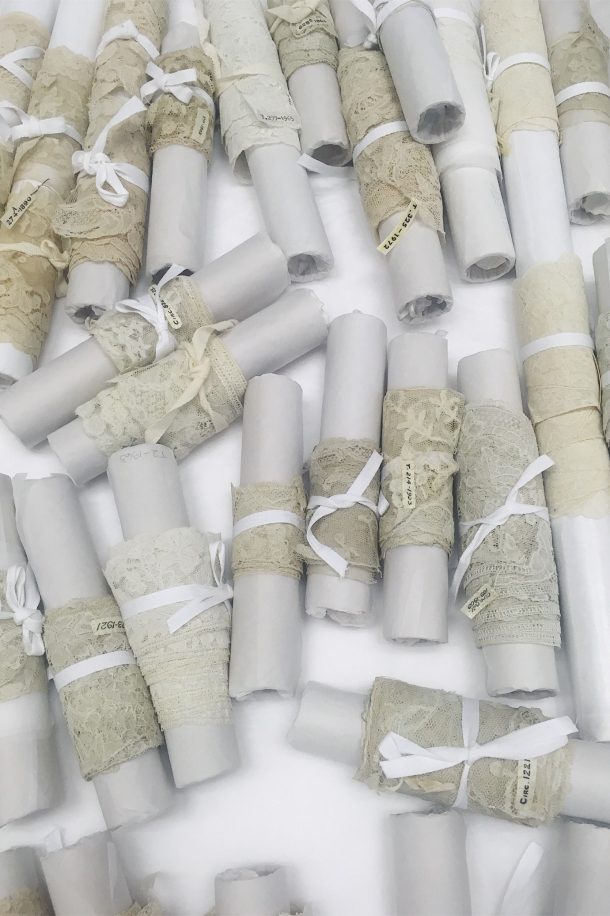
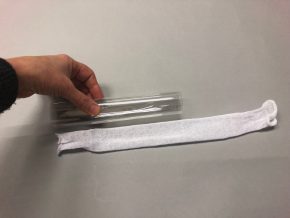
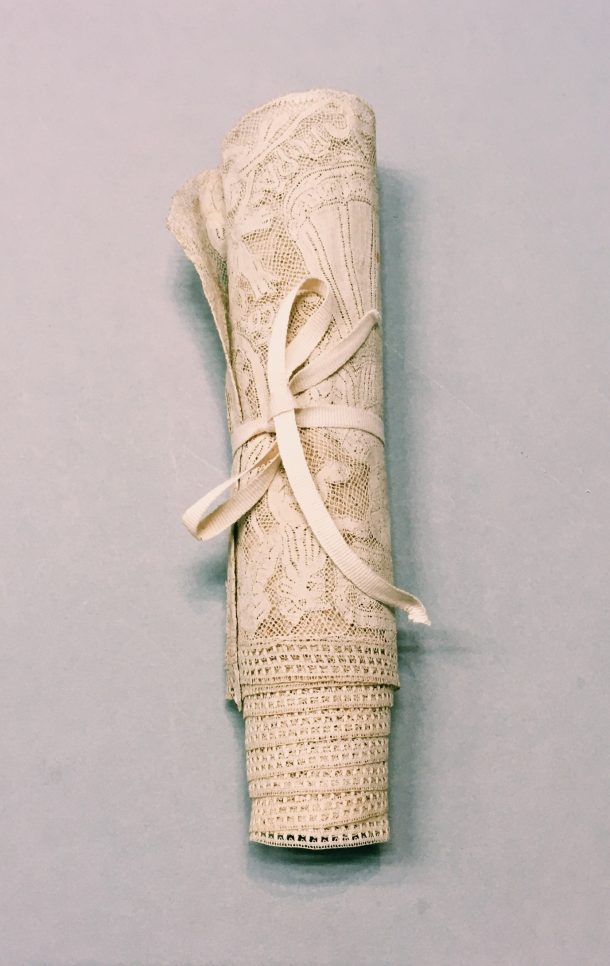
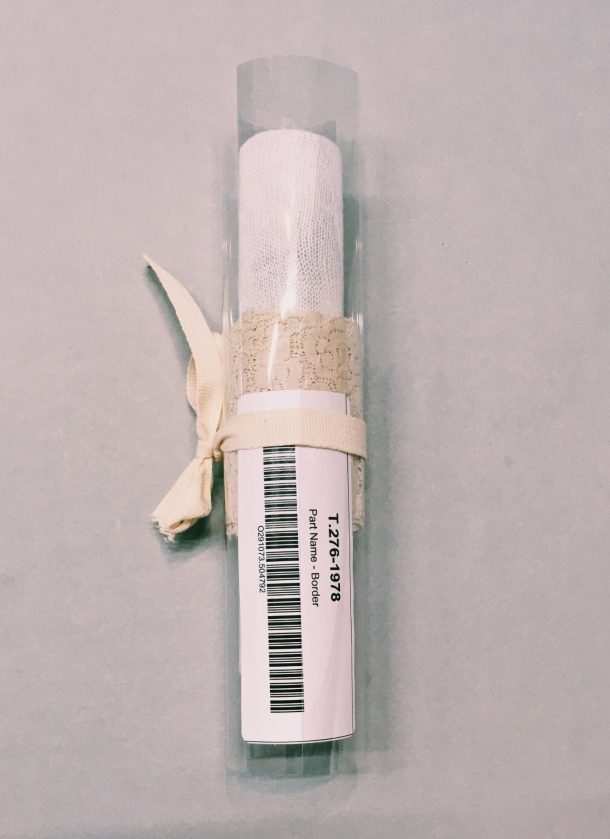
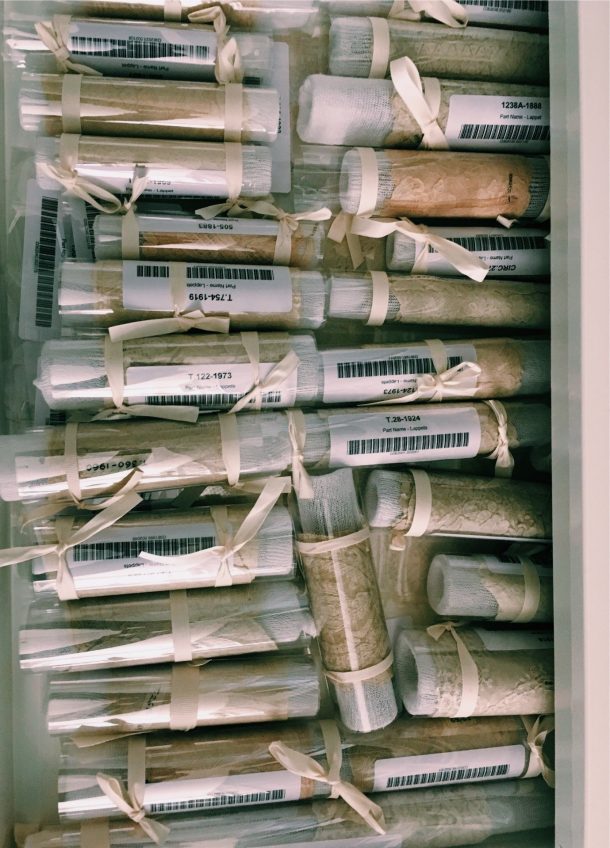
In October 2017, working alongside Curator Suzanne Smith, we conducted a pilot day to test the two packing methods before the project was given the green light. It was great to really get involved and understand the limitations and successes that the project had.
So far, the project has been proving extremely successful and since November we have collectively rehoused over 1000 lace objects. This is all down to the tireless effort put into the Museum Technicians at Blythe House who work on this project every day, making sure that the objects are safe to move during the decant and to provide long term storage solutions for these important examples of lace.
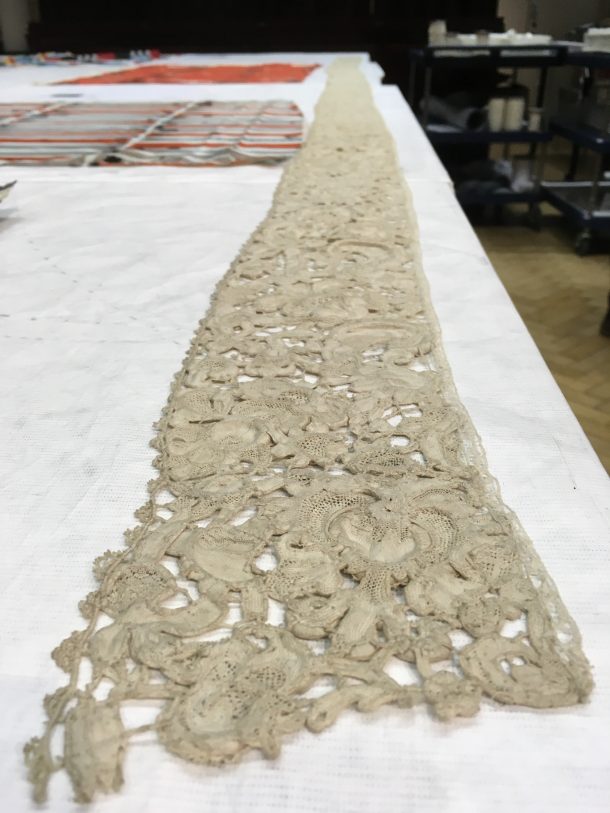
Here are some of the interesting pieces we have come across during the project . . .
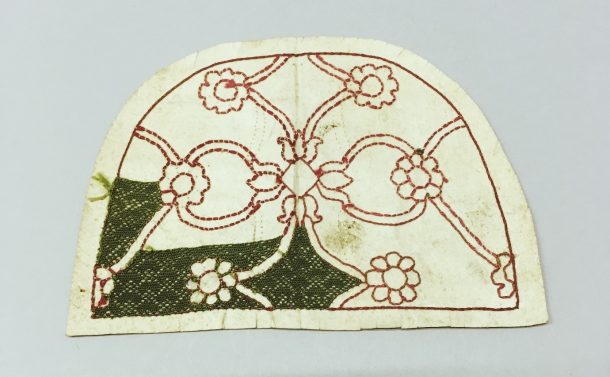
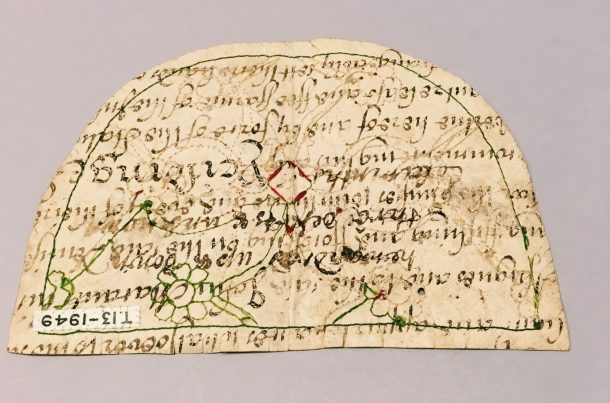
Here is a wonderful example of lace made with human hair that Technician’s Kristian and Oly have worked on . . .
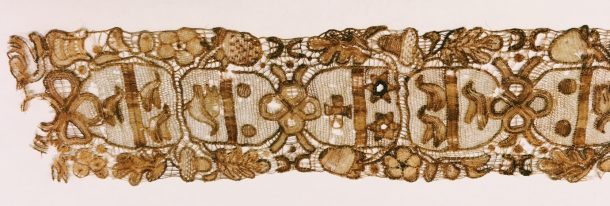
Because of their fragility, very few pieces of needle lace worked in hair survive from the 17th century. They are usually in the shape of a narrow band, like this. One example has loops at the ends, suggesting that it was meant to be fastened around something. It seems most likely that such pieces were worn around the wrist, as a bracelet.

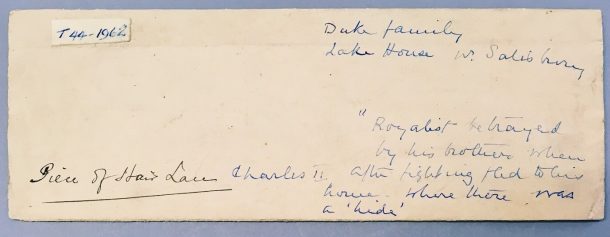
A reference in the English poet John Donne’s poem ‘The Relique’, written in the early 17th century, suggests that bracelets worked in hair were given and worn as love tokens:
When my grave is broke up againe
Some second ghest to entertaine …
And he that digs it, spies
A bracelet of bright haire about the bone,
Will he not let us alone
And thinke that there a loving couple lies …
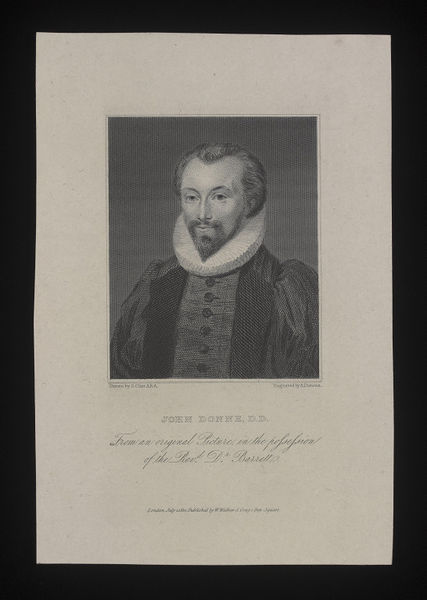
© Victoria & Albert Museum, London
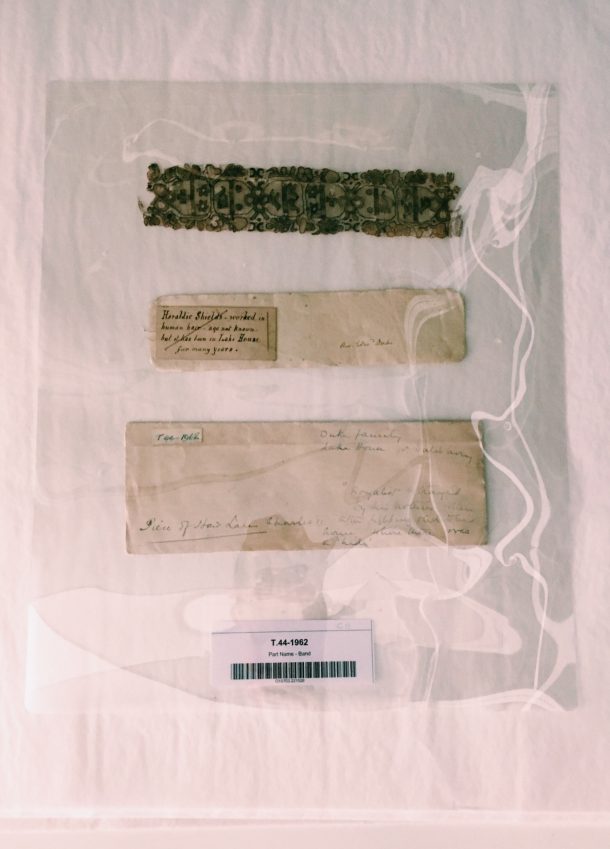
I look forward to exploring this project further with you as it progresses. The Decant Team aim to bring you regular updates about the rehousing of the lace and showcase some of the more interesting pieces we stumble upon during the project.
With over 1000 lace objects already digitised, If you are interested in looking at this collection further then you can find them by searching “lace” by clicking here.



From Maine, USA – I am 80 and a needlework expert with over 4,000 books in my private library on lace, embroidery, and related subjects. England has a damp climate. Does Melinex breathe, or can damp be trapped inside a sealed casing? In the 20th C. I was taught at museum-sponsored Conservation/Restoration seminars that textiles in storage must breathe. I have sent your blog address to about 1,000 subscribers around the world via Lace@Arachne.com and have told them I will ask you, and get back to them with your response.
Dear Jeri, thank you so much for reading my post and for your comments regarding the methods we are using to rehouse the V&A’s lace extensive collection. I have been in contact with one of our textile conservators and she has advised that you are correct, Melinex does not breath sufficiently if completely sealed. So by using Melinex envelopes to keep safe the pieces these are normally open at one side and this is good and they must not be sealed, as we are only spot welding each sample, there is sufficient air circulating for long term conservation. The finished pieces are safe to be kept in drawers or boxes dust free. Many thanks and please do get in touch again if you would like to discuss further.